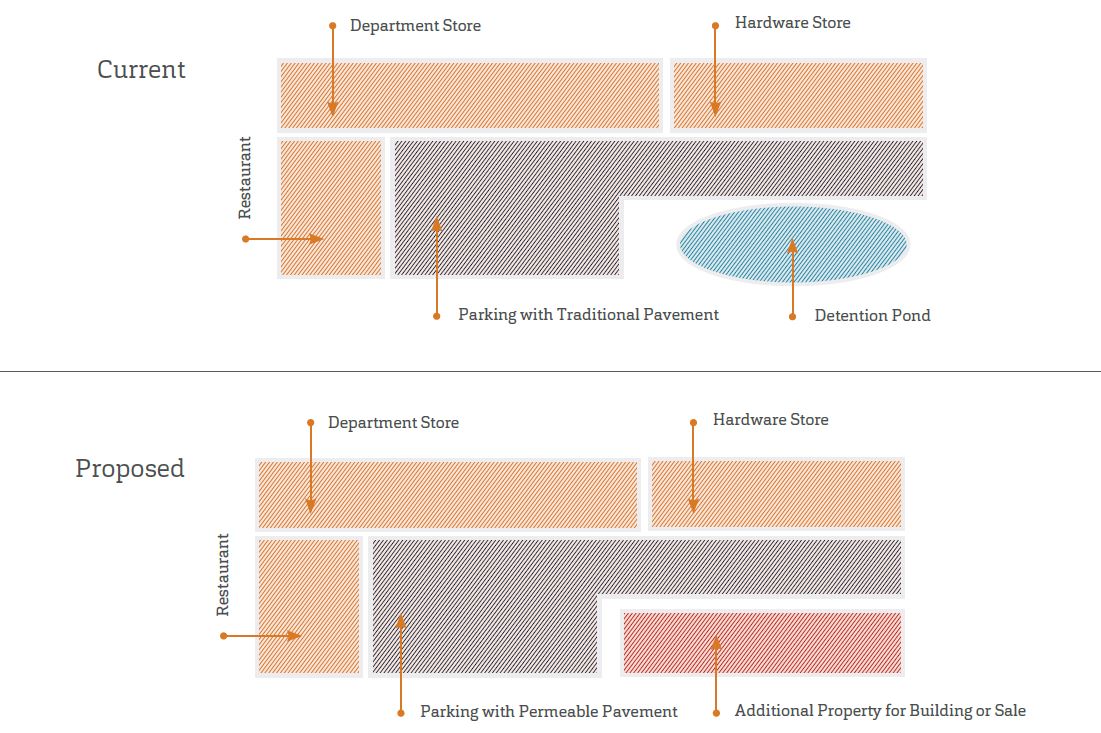Increased Value & Safety
In conventional stormwater drainage designs, detention or retention ponds can consume a large portion of the site. These ponds have limited alternative applications (assuming the pond dries out sufficiently for the intended alternative use) and reduce the income generating footprint of the site.
PICP combine the parking and drive lanes with the retention or detention footprint, therein allowing the lands that would otherwise be consumed by the pond to be transformed into continuous use green space, recreational areas, or even reclaimed for increased development. Examples exist where the use of PICP allowed for the preservation of wooded/ecological areas that would have otherwise been cleared for, or impacted by, the stormwater detention or retention systems.
In other commercial developments or subdivisions, additional building lots were added, with the revenue of the additional building or house exceeding any increased capital cost of the PICP system. In high density developments, more parking spots were available using PICP, and therefore more units were added to the high rise building.
One developer in a particularly tight ocean front development referred to the additional parking stalls achieved by PICP as “million dollar lots” as he was able to add a one million dollar condo for each additional parking spot.

NOTE: Image courtesy of North Carolina Department of Environment and Natural Resources.
With the water detention/retention facility located below ground, we also eliminate public safety concerns associated with the accidental drowning of children, and do not provide breeding grounds for insects that transmit diseases like West Nile Virus.

